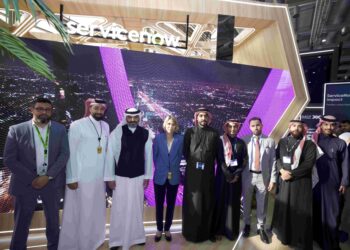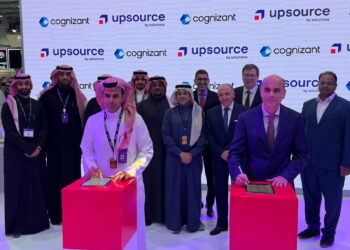Oracle has expanded its hybrid cloud portfolio with Oracle Roving Edge Infrastructure, a new offering that brings core infrastructure services to the edge with Roving Edge Devices (REDs) – ruggedised, portable, scalable server nodes. Using Oracle Roving Edge Infrastructure, organisations can run cloud workloads wherever they need them, even in the world’s most remote locations. Whether it is in the back of a plane, a polar observatory, or an oil tanker in the mid-Atlantic, the power of Oracle Cloud is always accessible with Oracle Roving Edge Infrastructure.
The new service is part of Oracle’s comprehensive hybrid cloud portfolio, which provides customers with more flexibility and control over their cloud deployments than other vendors. Global customers across financial services, public sector, healthcare, logistics, and communications industries are using Oracle’s hybrid cloud solutions to support their cloud transformations without the trade-offs in scale, data sovereignty, and control that they have had to make in the past.
“Customers want choice when it comes to running workloads in the cloud. Each customer has different requirements based on data sovereignty, scale, or wanting the full experience of a public cloud on-premises with all of Oracle’s cloud services. Oracle Roving Edge Infrastructure is the latest example, delivering core infrastructure services to remote locations,” said Clay Magouyrk, Executive Vice President, Oracle Cloud Infrastructure. “Oracle’s hybrid cloud portfolio essentially delivers a cloud region wherever and however a customer needs it.”
In addition to its public cloud offerings, which include 29 Oracle Cloud regions, Oracle Government Cloud, and six global Oracle-Microsoft Azure Interconnect regions, Oracle offers the most complete support for hybrid cloud strategies. Services include Oracle Dedicated Region Cloud@Customer, Oracle Exadata Cloud@Customer, Oracle VMware Cloud Solution, and now Oracle Roving Edge Infrastructure. Together, these solutions provide customers with flexibility of location and a high degree of customer control so customers can run an identical set of Oracle Cloud services in their data centers, run core cloud services entirely disconnected from the internet, and minimise dependencies on the public cloud.
Oracle Roving Edge Infrastructure Accelerates Cloud Workloads Outside the Bounds of Data Centers
Oracle Roving Edge Infrastructure delivers core infrastructure services, platform software, enterprise grade security, and applications to the edge and disconnected locations with Roving Edge Devices, ruggedised, portable, scalable server nodes. It enables customers to operate cloud applications and workloads in the field, including machine learning inference, real-time data integration and replication, augmented analytics, and query-intensive data warehouses. In addition, it delivers cloud computing and storage services at the edge of networks for government and enterprise organisations, enabling low-latency processing closer to the point of data generation and ingestion, which provides timely insights into data.
Oracle Roving Edge Infrastructure is a fully mobile, connection-independent extension of customers’ Oracle Cloud Infrastructure (OCI) tenancy with a similar interface and workflow to provide a consistent, unified experience. An Oracle RED device is equipped with high-performance hardware including 40 OCPUs, an NVIDIA T4 Tensor Core GPU, 512 GB RAM, and 61 TB of storage, and can be clustered into groups of 5 to 15 nodes in a single cluster, starting at $160 per node per day.
Oracle Dedicated Region Cloud@Customer is the industry’s first fully-managed cloud region that brings all of Oracle’s second-generation cloud services, including Oracle Autonomous Database and Cloud applications, to customer data centers and starts at only $500K a month. Enterprises get the exact same complete set of modern cloud services, APIs, industry-leading SLAs, superior price-performance, and highest levels of security available from Oracle’s public cloud regions in their own data centers. It is ideal for highly regulated or security-focused businesses needing to meet demanding latency and data residency requirements, reduce operational costs, and modernise legacy applications. Since its introduction, 12 new services have been added to the Dedicated Region portfolio, including Autonomous JSON Database, MySQL with Heatwave, and Logging Analytics.
Customers also want flexibility of location and control for their VMware workloads. Oracle’s unique approach to VMware enables customers to maintain a high level of control while increasing their scalability and lowering costs.
The Oracle Cloud VMware Solution (OCVS) provides a dedicated, cloud-native VMware-based environment that enables enterprises to quickly and easily move their production VMware workloads to OCI using familiar VMware tools. The solution provides customers with the identical experience in the cloud as in on-premises data centers and seamlessly integrates with Oracle’s second-generation cloud infrastructure, including Dedicated Region Cloud@Customer deployments. With OCVS, customers have complete access and control of their VMware environment, including root access, so they fully control the cluster, manage it, and even choose when, or whether, to upgrade elements of the stack. It provides the performance, control, and familiarity of an on-premises VMware cluster, while automating the provisioning and scaling of the infrastructure. Since its introduction, OCVS has expanded scaling to a 64-node cluster (3,328 cores, 49 TB of RAM, and 3.2 PB of NVMe SSD) and offers preview support of VMware 7 with Tanzu.
Oracle also announced that its OCVS has obtained Authority to Operate (ATO) at the High impact level from the FedRAMP Joint Authorization Board. With this accreditation, US government customers can now operate VMware Software Defined Data Centers in Oracle Cloud to manage and run critical applications and workloads. This accreditation gives government customers the flexibility to build and manage VMware environments in Oracle Cloud, with the peace-of-mind of industry-leading security.










Discussion about this post